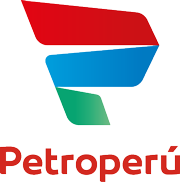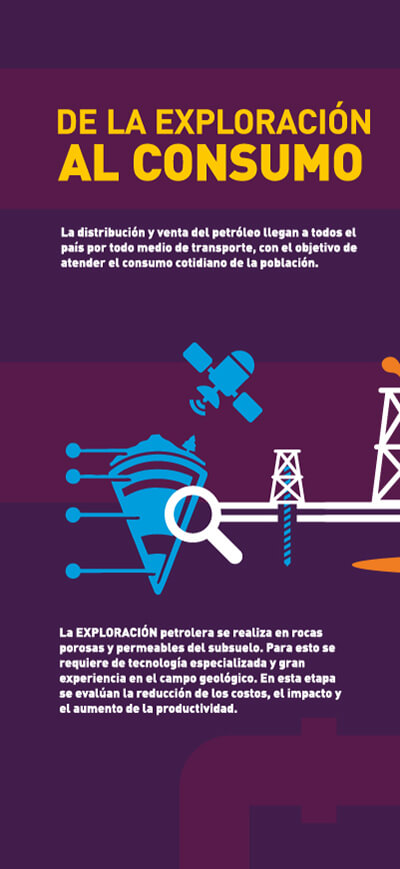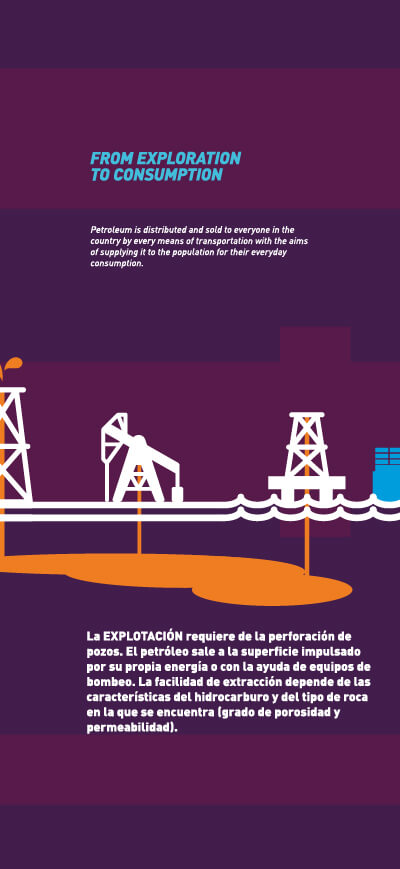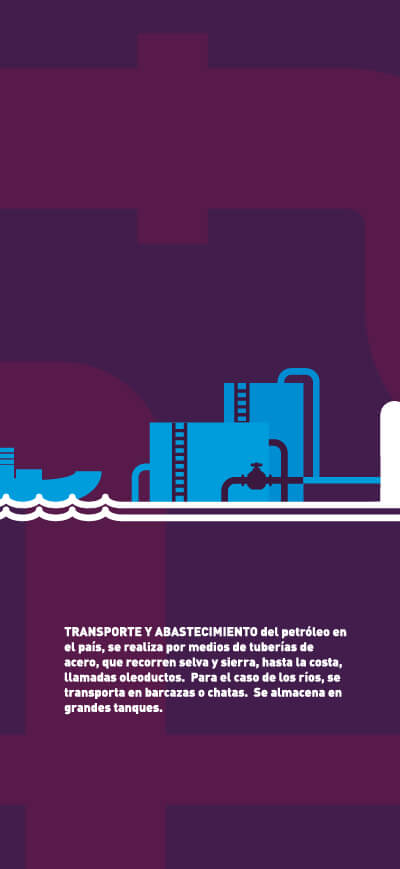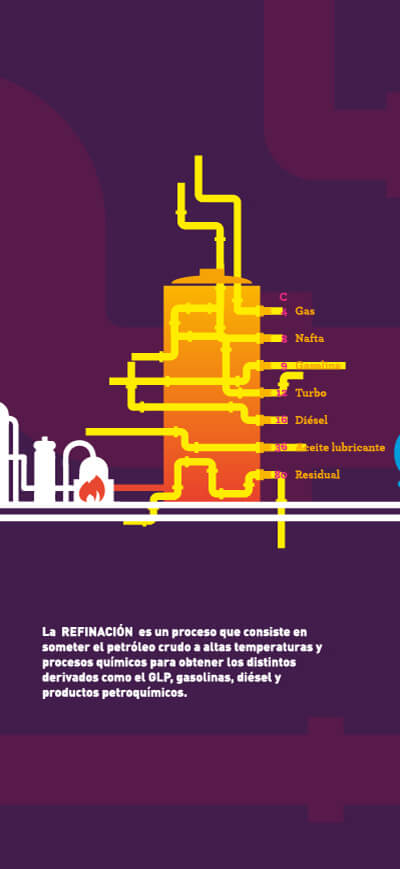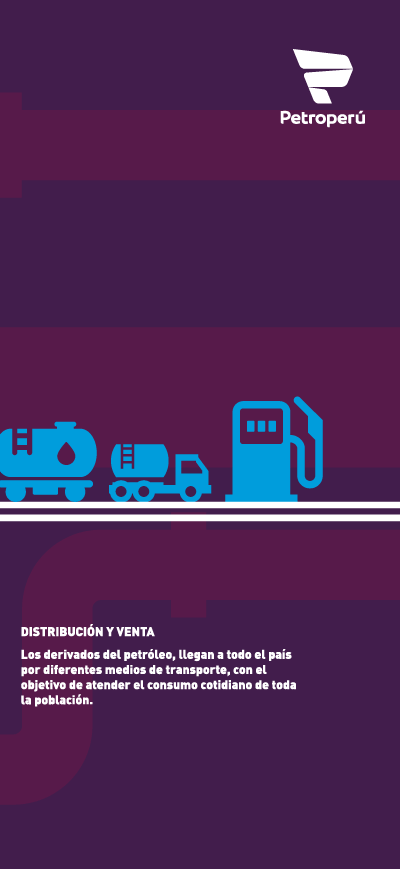Refining
Crude oil arrives at the refinery and is stored in large tanks to regulate evenly the amount to be treated, according to the possibilities of the facilities and the needs of the market.
The basic principle used in the refining of crude oil is that of distillation, that is, heating the oil in a furnace and passing it boiling through high towers where the temperature in the upper parts is kept gradually lower than in the bottom.
This refining process is continuous. The oil is permanently pumped into the furnace and the products are continuously extracted from the towers. This is repeated in several plants of the refinery to get the required products from the available crudes. Other plants are used for the chemical treatment of products, to remove unwanted color and odor, and for the production of lubricating oils.
Considering the mixture of hydrocarbons that make up crude oil, we can deduce that, as a rule, the lighter it is, the more volatile it is, and therefore, the lower its boiling point. This is why the hydrocarbon group of gasoline boils at a lower temperature than kerosene, and so on. It is these differences that facilitate the selection of the different groups or fractions.
Vapors escape in the form of bubbles through the valves in the plates or trays located at different heights in the tower, while the cooler liquid continuously falls from the top.
A progressive condensation and redistillation occurs on each floor or “tray,” as they are called. The gasoline comes out in the form of steam from the top of the tower, the kerosene is removed from a tray a little lower and stored in small special tanks. Oil that could not be produced flows from the base of the tower in the form of black residue. Thus, in the “fractionation tower” the first step of the separation of the hydrocarbons contained in the crude oil takes place; then follows a number of operations of purification of the substances obtained and separation of new ones, whose complexity makes it impossible to explain them in a reduced text.
There are other Process Plants, which fulfill functions complementary to primary distillation and which allow a better use of the residues and primary hydrocarbons that are distilled in this first stage.
